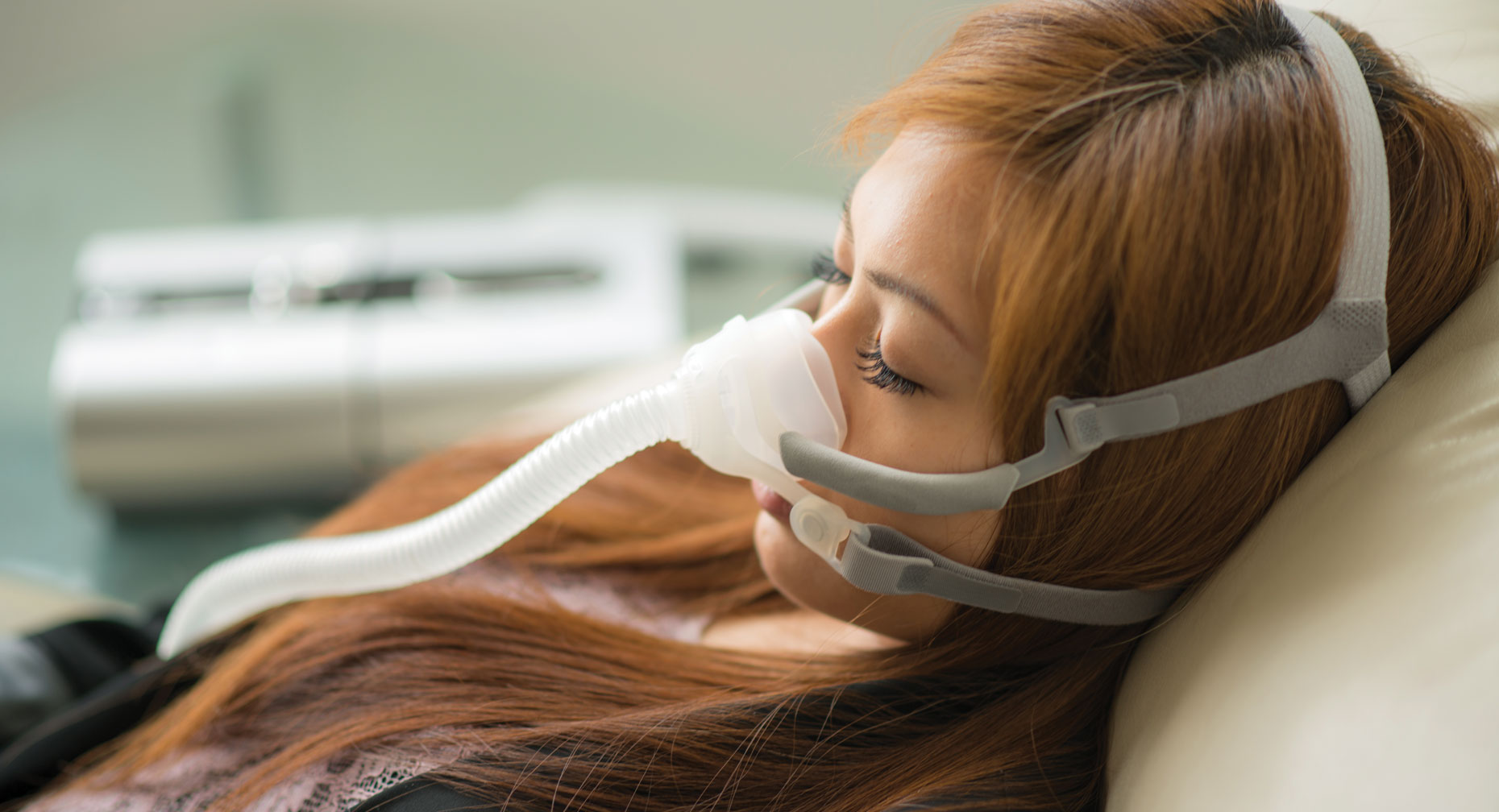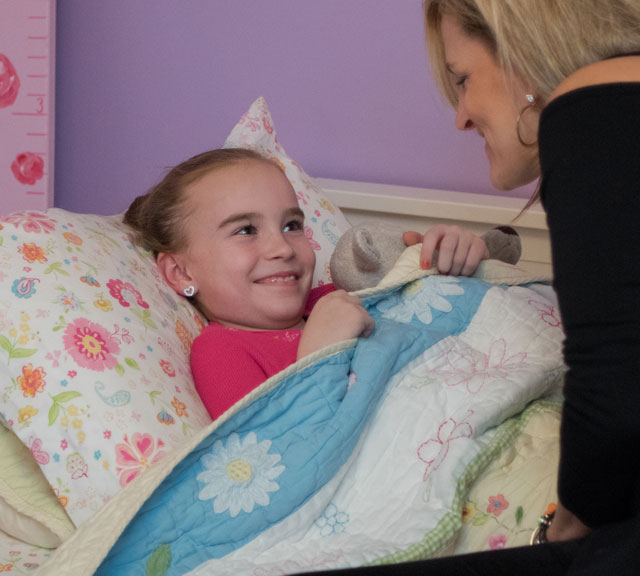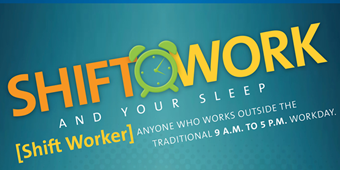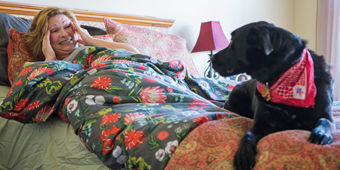Parasomnias: Ways Sleep Can Go Bump In the Night

Find Your Perfect Match
Answer a few questions and we'll provide you with a list of primary care providers that best fit your needs.
A good night’s sleep eludes many Americans. Chances are, you know this all too well — because sleep disorders affect as many as 70 million U.S. adults, reports the American Sleep Association.
When you think of sleep problems, insomnia and sleep apnea likely come to mind. But you’ll find many other sleep-depriving and sleep-disrupting conditions tucked into the blanket term title=Primary Sleep Disorders: Parasomnia
Parasomnias represent a wide array of abnormal sleep-associated behaviors, movements, dreams and perceptions, such as sleepwalking, sleep talking, sleep paralysis, nightmares, sleep aggression, bed wetting, REM sleep behavior disorder, night terrors, sleep eating disorder and teeth grinding. There’s even a condition disturbingly called exploding head syndrome.
About all that parasomnia events have in common is that they can make sleeping through the night difficult – for you and anyone sleeping with you. This can lead to daytime drowsiness.
Parasomnia episodes can occur regularly or rarely – when you are falling asleep, sleeping or waking up. And often you have no memory of the event after awaking. Usually all you have to go on is a bedmate’s or roommate’s account of your nocturnal activity.
Parasomnias, which affect about 10 percent of Americans, are most common in children – though people of all ages experience them.
Who Is At Risk Of Parasomnias?
Parasomnias, which affect about 10 percent of Americans, are most common in children – though people of all ages experience them.
Brain immaturity contributes to children’s heightened risk for parasomnia sleep disorders. The good news: Children typically outgrow parasomnias, which usually do not leave lasting negative health effects.
You can reduce your risk of parasomnia by practicing good sleep habits:
- A regular sleep schedule with a relaxing bedtime routine
- Stress management
- Seven to eight hours of sleep
Some parasomnias, such as sleepwalking, can put you and others at risk of injury. When that’s the case for you, your child or other loved one, you should seek treatment. The same goes for parasomnias that shortchange you on sleep, involve symptoms that cause concern, such as recurring nightmares, or happen with increasing frequency. Your health care provider may recommend a sleep study.
What Causes Parasomnias?

Causes of parasomnias vary but include the following:
- Genetics. Parasomnias often run in families.
- Other sleep disorders, such as obstructive sleep apnea
- Various medications
- Brain disorders, in some cases, such as some instances of REM sleep behavior disorder
Rarely are parasomnias related to a psychiatric disorder.
Examples of Parasomnias
Some of the more common parasomnias include:
Sleep Walking: This is most common in children, particularly boys, though it also is seen in adults. Sleep walking usually ends before the teen years. Frequency can vary from once a month to nightly. Some sleep walkers may merely sit up in bed or walk around in their bedroom. Others may walk around the house or even walk out of the house.
Injury is rare for sleepwalkers, but you can reduce risk by removing tripping hazards from around the bed and locking windows and doors to the outside.
REM Behavior Disorder (RBD): Men over age 50 are most at risk of RBD, which overrides natural paralysis of the body’s voluntary muscles during the rapid eye movement (REM) phase of sleep. If you have RBD, you may physically act out your dreams, which are often intense and violent. As you thrash about in bed, you can put yourself and your bed partner at risk of injury. When you awaken, you may remember your dream, but won’t be aware of your movement. Sleep studies usually are recommended. Treatments often include medication or behavioral therapy.
Sleep Terrors: These can occur in adults but are more common in children, usually trailing off by age 5. Sleep terrors, unlike nightmares, aren’t remembered. They occur in the deepest phase of sleep, while nightmares occur in the REM phase. During a sleep terror, which typically lasts 20 minutes or less, you’re likely to yell out, sweat, have an increased pulse and sit up in bed. You may appear to be awake, but you can’t communicate.
Sleep tremors can be triggered by stress, some medications and sleep apnea. For safety, clear the bedroom floor of tripping hazards.
Nightmares: These vivid, frightening dreams more commonly haunt children than adults, and they’re considered a normal part of childhood development. However, you may want to call your child’s health care provider if the nightmares cause too much nighttime drama for your family and leave your child too sleepy the day after.
For adults, nightmares are triggered by emotional stress, anxiety, illness, and medications that disturb REM sleep.
Bedwetting: Bedwetting, which tends to run in families, is considered a sleep disorder when a child 5 years or older has at least two incidents a week. By about their fifth birthday, most children can control their bladders during sleep.
Primary bedwetting is considered a sign of being unable to wake up when the bladder is full. In a few cases primary bedwetting can be attributed to inadequate production of a hormone that decreases urine production during sleep. Secondary bedwetting results as a reaction to social or mental stress or a medical problem such as diabetes or a urinary tract infection.
Exploding Head Syndrome: This parasomnia gives you the sense of hearing a startling noise – like cymbals crashing, a bomb exploding or a loud bang – just before you drift off to sleep or awaken. Sometimes the imaginary noise is accompanied by a flash of light and a muscle twitch. And the experience can be so unsettling that some people think they’re having a stroke.
This syndrome is more likely to happen when you’re under stress and are extremely tired. Getting more sleep can help prevent episodes, which vary in frequency from one person to the next.
Sleep Talking: About half of young children are sleep talkers – compared to only five percent of adults. Sleep talking, which runs in families, can disrupt the sleep of bedmates and roommates. It’s still uncertain whether sleep talking is linked to dreams. Most of the time sleep talk is inoffensive. Sometimes nonsensical. And occasionally offensive.
If you, your child or family are losing sleep over restless nights, share your concerns with your health care provider.
Find Your Perfect Match
Answer a few questions and we'll provide you with a list of primary care providers that best fit your needs.
Source: National Sleep Foundation; American Academy of Sleep Medicine; American Sleep Association




